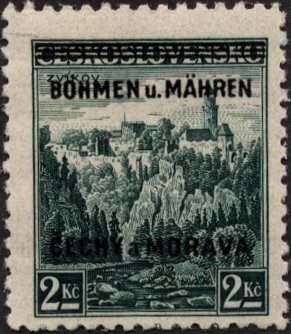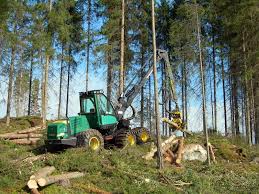Stamp: Zvíkov with overprint (Bohemia and Moravia 1939)
Zvíkov with overprint (Bohemia and Moravia 1939)
15 July (Bohemia and Moravia ) within release Přetiskové provisorium goes into circulation Stamp Zvíkov with overprint face value 2 Czechoslovakian koruna
| Stamp Zvíkov with overprint in catalogues | |
|---|---|
| Michel: | Mi:DE-BM 14 |
| POFIS: | POF:14 |
Stamp is square format.
Overprint ""Boehmen u. Maehren - Cechy a Morava""Also in the issue Přetiskové provisorium:
- Stamp - Český ráj with overprint face value 3;
- Stamp - Lázně Poděbrady with overprint face value 4;
- Stamp - Olomouc with overprint face value 5;
- Stamp - Bratislava with overprint face value 10;
- Stamp - Czechoslovakian coat of arms with overprint face value 20;
- Stamp - Czechoslovakian coat of arms with overprint face value 25;
- Stamp - Czechoslovakian coat of arms with overprint face value 30;
- Stamp - Comenius with overprint face value 40;
- Stamp - Plzeň with overprint face value 50;
- Stamp - Štefánik with overprint face value 60;
- Stamp - Tomáš Garrigue Masaryk (1850-1937), president face value 1;
- Stamp - Tomáš Garrigue Masaryk (1850-1937), president face value 1;
- Stamp - Mukačevo-Palanok with overprint face value 1.20;
- Stamp - Banská Bystrica with overprint face value 1.50;
- Stamp - Kutná Hora with overprint face value 1.60;
- Stamp - Zvíkov with overprint face value 2;
- Stamp - Strečno with overprint face value 2.50;
Stamp Zvíkov with overprint it reflects the thematic directions:
A landscape is the visible features of an area of land, its landforms and how they integrate with natural or man-made features. A landscape includes the physical elements of geophysically defined landforms such as (ice-capped) mountains, hills, water bodies such as rivers, lakes, ponds and the sea, living elements of land cover including indigenous vegetation, human elements including different forms of land use, buildings and structures, and transitory elements such as lighting and weather conditions. Combining both their physical origins and the cultural overlay of human presence, often created over millennia, landscapes reflect a living synthesis of people and place that is vital to local and national identity. The character of a landscape helps define the self-image of the people who inhabit it and a sense of place that differentiates one region from other regions. It is the dynamic backdrop to people’s lives. Landscape can be as varied as farmland, a landscape park, or wilderness. The earth has a vast range of landscapes, including the icy landscapes of polar regions, mountainous landscapes, vast arid desert landscapes, islands and coastal landscapes, densely forested or wooded landscapes including past boreal forests and tropical rainforests, and agricultural landscapes of temperate and tropical regions.
A castle (from Latin: castellum) is a type of fortified structure built in Europe and the Middle East during the Middle Ages by European nobility. Scholars debate the scope of the word castle, but usually consider it to be the private fortified residence of a lord or noble. This is distinct from a palace, which is not fortified; from a fortress, which was not always a residence for nobility; and from a fortified settlement, which was a public defence – though there are many similarities among these types of construction. Usage of the term has varied over time and has been applied to structures as diverse as hill forts and country houses. Over the approximately 900 years that castles were built, they took on a great many forms with many different features, although some, such as curtain walls and arrowslits, were commonplace.
Forestry is the science and craft of creating, managing, planting, using, conserving and repairing forests and woodlands for associated resources for human and environmental benefits. Forestry is practiced in plantations and natural stands. The science of forestry has elements that belong to the biological, physical, social, political and managerial sciences. Forest management plays an essential role in the creation and modification of habitats and affects ecosystem services provisioning



